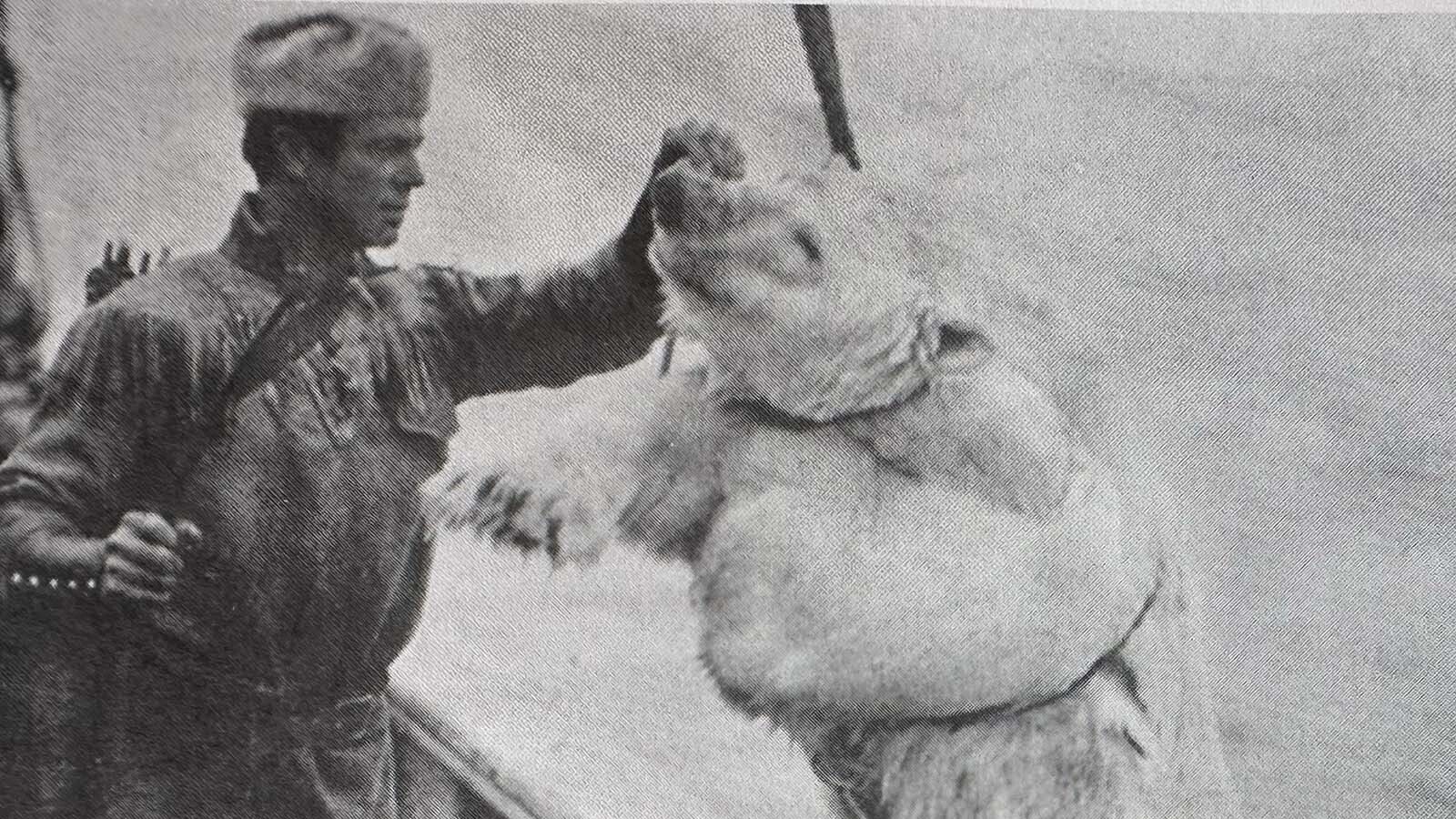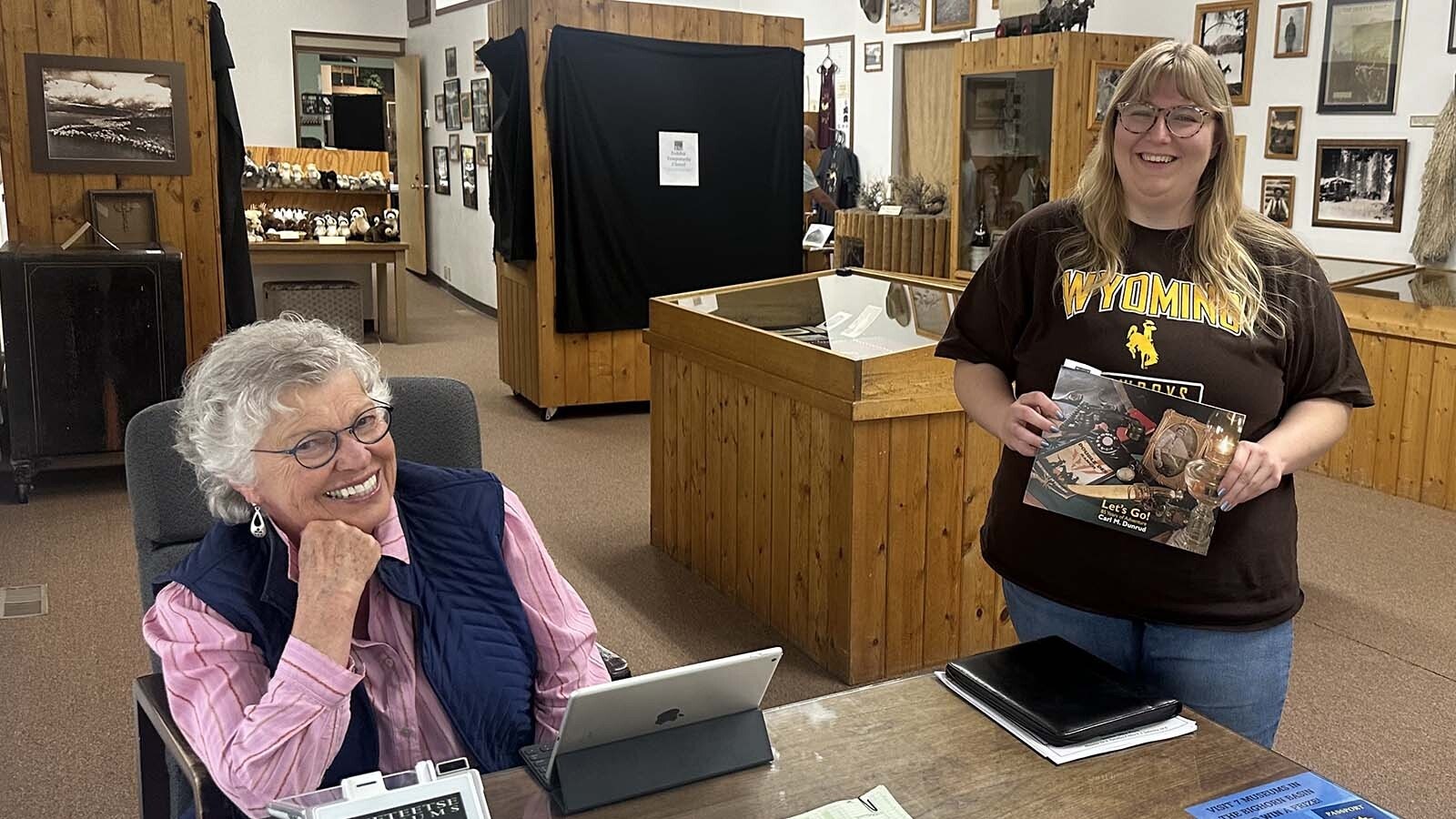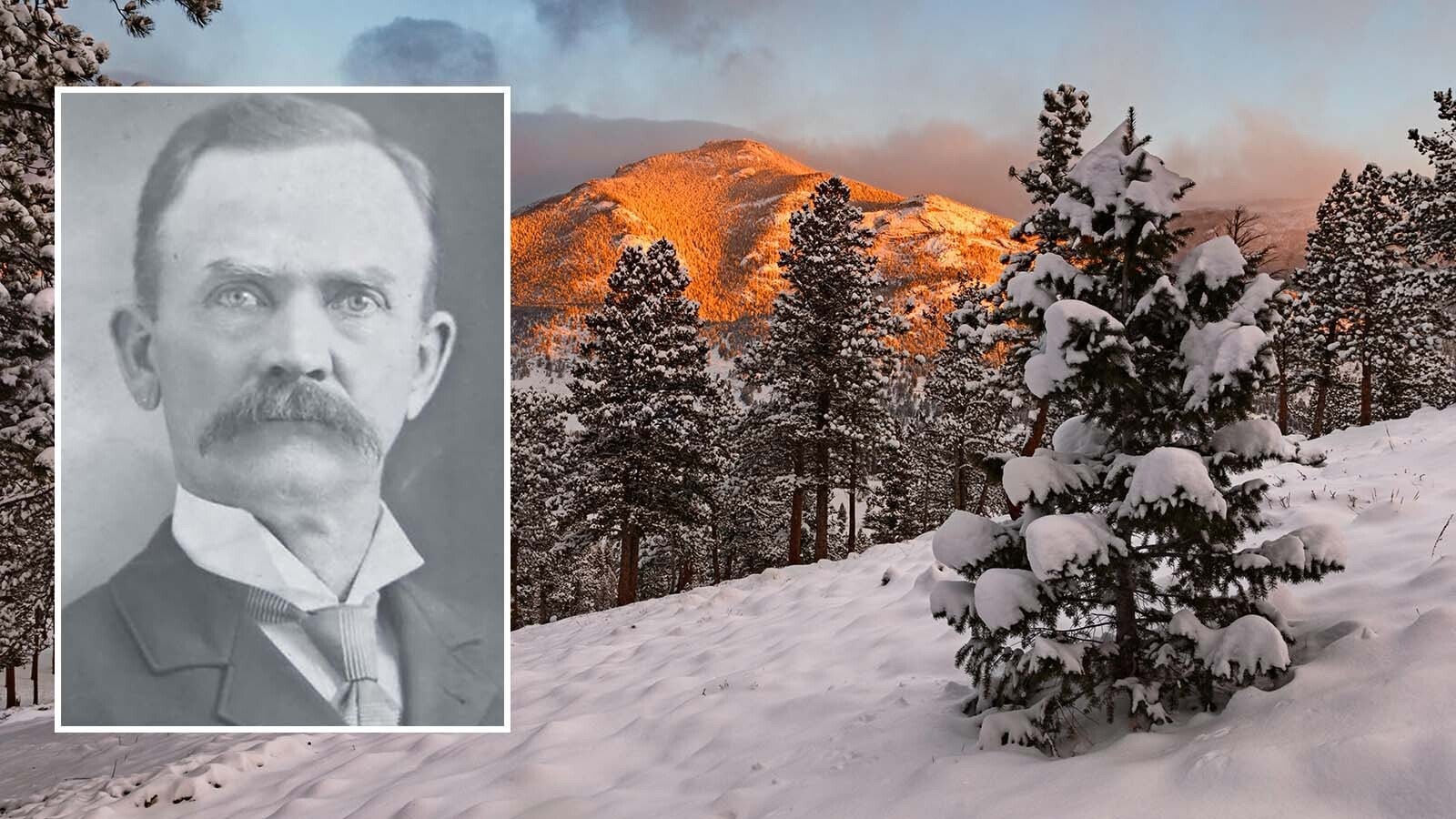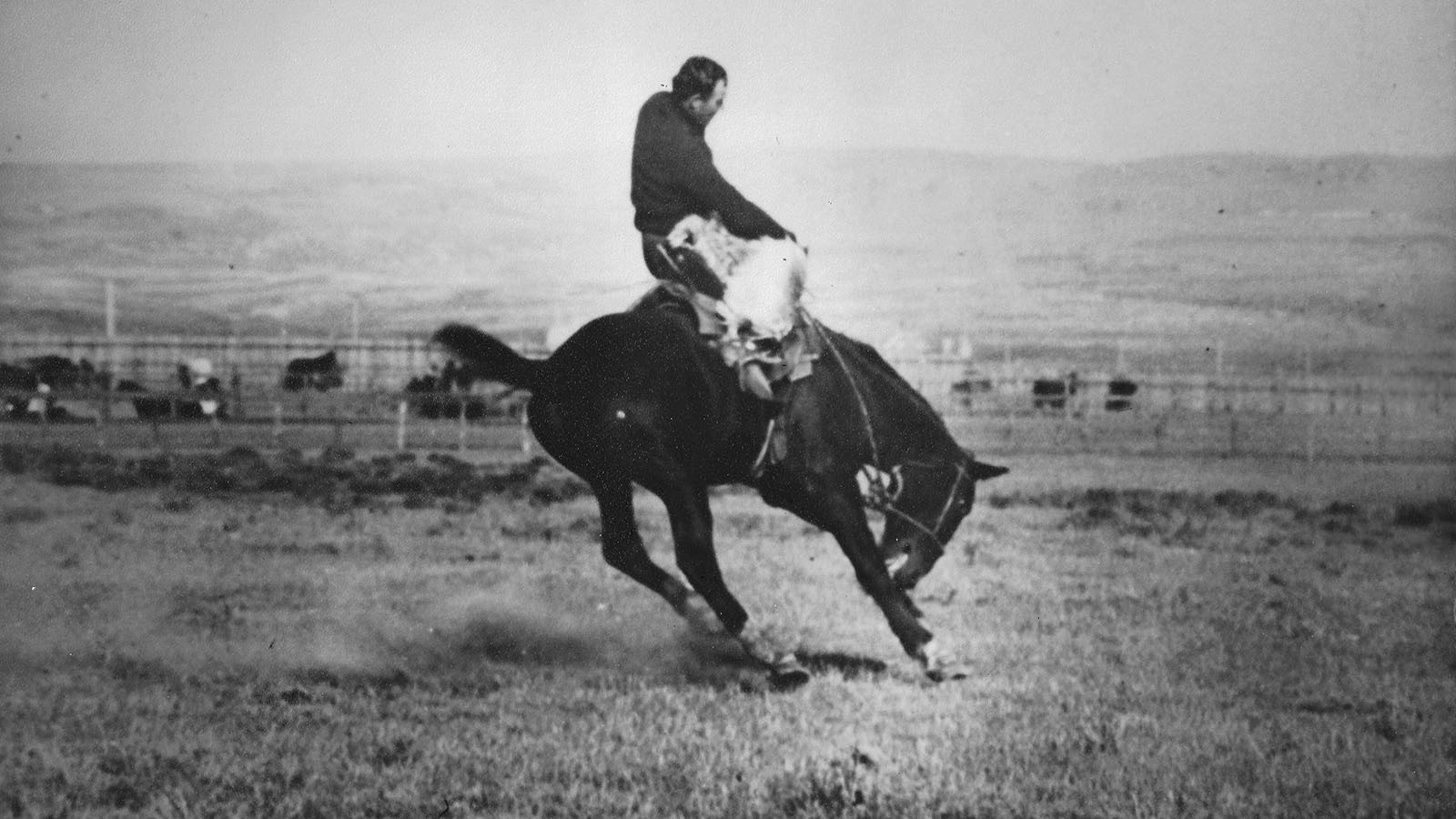Carl Dunrud steadied himself against the small schooner. It was 1926 and the Yellowstone Park ranger and Wyoming cowboy had a lasso ready as he eyed his target.
Looking back at him was a polar bear swimming in the cold Arctic Sea.
Dunrud had dreamt of a moment like this since he was 12 years old and recovering from the flu. While confined to his bed at his family’s farm in Minnesota, he had read about the life of the Eskimo.
It intrigued him so much that he had made up his mind to go to Greenland one day. Little did he know that his childhood fantasy would one day come true.
Carl Dunrud, a self-described ‘rolling stone’ had spent a couple years fighting wildfires on horseback in Montana and helping his brother on the family farm in Minnesota.
In 1921, he was passing through Wyoming in a fancy Dodge when he and his friends decided to take a detour to see Old Faithful in Yellowstone National Park.
When he learned that packers were needed, he left the motorized caravan and began life as a packer at the park. His first group included George Putnam, a promoter and owner of the New York publishing house. This chance meeting would soon lead to one of Dunrud’s greatest adventures in the Arctic.

Northward To Greenland
Dunrud was working as a Yellowstone Park ranger when he was contacted by his friend, Putnam, and asked to lead a pack trip to Canada. These plans suddenly changed to an expedition to Greenland.
Putnam wasn’t about to pass up this opportunity and wanted his cowboy friend’s help. His goal was to bring back some narwhal and other trophies for the American Museum of Natural History.
It was to be a scientific expedition filmed by the news agency, Pathe News, so Putnam needed to ensure that everything about the trip was spectacular.
To meet his requirements for showmanship, Putnam needed someone who could rope and ride a musk ox bull. He also needed someone who knew how to use a lasso to capture a polar bear for the Bronx Zoo in New York.
According to Dunrud in his memoir, “Let’s Go! 85 Years of Adventure,” it was their days in the Yellowstone Park together, that led to this moment. Putnam knew that Dunrud would take on the job with enthusiasm and do his best to be successful.
“Let’s go!” Dunrud said in response to the request. “I’ll try anything once!”
With Dunrud’s commitment to the adventure, Putnam ordered waterproof ropes for roping polar bears and a surcingle for riding musk ox.
“I had never seen an ocean,” Dunrud said. “But I had ridden a bull buffalo that I figured was much stronger than a musk ox, so I was rarin’ to go.”
He resigned from the ranger force in 1925 and spent the next year helping Putnam put together the expedition to Greenland. He trained on the diesel engine that would power the schooner so that he wouldn’t be useless while on the ocean.
Putnam was determined to make the trip one of the grandest voyages to Greenland and to ensure their success, he employed none other than the famous Captain Bob Bartlett and his 109-foot fishing schooner, the Morrissey.
Bartlett had been Admiral Robert Peary’s skipper when Peary discovered the North Pole and this would be the veteran captain’s 10th trip north of the Arctic Circle.
The Arctic Adventures
Leading up to the climactic lassoing of the polar bear, Dunrud and the rest of the carefully selected team spent long weeks on the Arctic Ocean. They survived being stuck among icebergs, explored the wildlife habitats and met with the native Inuit who called the remote region home.
By July 1926, they had made it north of the Arctic Circle and were able to start collecting the specimens for Putnam’s scientists who were onboard the ship. This included narwhal, various birds, and walrus.
Dunrud successfully lassoed a walrus, which was more difficult than he had ever imagined. The 300-pound calf he brought in had no neck and nearly capsized the boat Dunrud was in. However, the expedition arrived too late in the season for him to even attempt to lasso and ride the musk ox.
It was in September, when they finally found the polar bear. Dunrud later admitted the experience was heartbreaking and one he would never wish to repeat.
Ready To Lasso A Polar Bear
The schooner was in the middle of Baffin Bay, sailing beneath the midnight sun on September 4, 1926, when two sailors spotted three polar bears on an iceberg.
“They were three cream-colored specks on white ice,” Dunrud said. “It was a mother and two cubs, which the Eskimo on board judged to be between one and a half and two years old.”
The movie man had his camera and Dunrud had his trusty lariat.
"Don't forget a bear's got claws, where the bull has hoofs," Captain Bartlett cautioned. He had heard Dunrud’s story of lassoing a raging bull but this adventure was about to be wildly different.
Putnam later said that the three polar bear had apparently gone to sleep on the ice and had drifted away from the main pack during the recent storm. Under the circumstances, he said, to kill or capture them would be a merciful act. Otherwise, they would perish slowly by starvation as their icy vessel rode them slowly south.
Bartlett guided the Morrissey to about 50 yards off the berg. With two Newfoundlander sailors to row and steer a small Banks dory, Dunrud went over the side.
The polar bears jumped into the water as the men approached. The mother swam in front of her young ones and Dunrud got his rope ready. Art Young, the expedition’s hunter, was standing by with his 95-pound bow on the schooner.
The Hunters Become The Pursued
“The situation now began to tighten up a bit,” Putnam said. “Our dory rounded the ice tongue and began to herd the three bears toward the ship. So far, the mother paid little attention to the Morrissey. She probably thought it was another berg on which she could take refuge.”
Realizing her mistake, the mother bear half rose out of the water and sniffed. Then she let out a loud snort of fury and defiance.
This pause gave Dunrud in his dory a chance to ride up almost on the heels of the bears. He rose, feet braced and swung his loop tentatively. But at that very moment the bear family turned and swam toward the dory.
“This was no joke,” Putnam said. “Polar bears in their native haunts are not famous for their mild manners. Let the old lady get her claws on the gunwale of the dory and no amount of rifle work could avert a tragedy.”
The party on the ship shouted advice. The boatmen began a feverish retreat. The movie man complained bitterly that we were interfering with the "finest film ever shot.” The bears swam faster toward the small dory with the three men, voicing their threats with angry growls.
Now the dory was in full flight. The sailors were frantic to get back aboard. One pulled wildly, while the other steered in a circling movement to outflank the bears behind. This led the big bear back past our bow.
"How are those boys going to get aboard?" asked Bartlett. "I don't want all those bears climbing up my side after them."
“Bob was right,” Putnam said. “Despite the movie enthusiast, we would have to shoot the old bear and do it right away, or she'd join our shipmates in the dory. It sounds trite enough to tell.
“But the sight of that huddled man in the dory stern casting frightened glances over his shoulder at the bear's black snout in the water just behind him made us glad we were safe aboard the Morrissey.”
Art Young shot the mother with four arrows.
“It was a sickening sight,” Dunrud said. “Many of us wished that we hadn’t been there to witness that part of the hunt.”
Dunrud watched the cubs and said that they sensed that something was terribly wrong with their mother.
They swam up to her and licked her face. With what he described as a great, convulsive effort, she raised her head and caressed one on her right. She then turned to the one on the left and nuzzled him tenderly. After that, her head sank beneath the water.
Dunrud said that it was as if she had uttered the words to her cubs, “Goodbye, I’m all through. I’ve done all I can for you. Now you will have to fend for yourself.”
After witnessing the scene, Dunrud had lost all his desire to hunt polar bear.
“Can you rope them, Carl?” Putnam yelled at him in excitement.
The Cowboy Lassoes A Polar Bear
Realizing the cubs were some 20 miles from shore and had no mother, Dunrud figured it was now up to him to save the orphans. He was determined to rope them, take them aboard the ship, and feed them. The hunt was over, and this would be a live capture.
With two sailors manning the oars of a dory, Dunrud roped a cub with his first throw. The male was full of fight when the men started to pull him into their small dory.
He growled and snarled.
Dunrud held on as the polar bear tried to chew the rope, scratch the boat, and climb in the boat with them all at the same time.
Putnam watched from the deck and later wrote a story for the New York Times in which he detailed his point of view of the event.
“For half an hour there raged as vicious a struggle as one could wish,” Putnam said. “Sometimes Carl was chasing the bear. Sometimes the bear was chasing Carl. Twice the bear made savage rushes and dug sharp claws and teeth into the dory's gunwale.”
When he tried to climb in the boat, Dunrud slapped the bear in the face and pried his paws off the gunwale. Meanwhile, the free cub refused to leave her brother
The schooner soon moved alongside. Dunrud threw his end of the rope to the sailors on deck, who held the bear up against the side of the ship.
They passed down a double half hitch on a cargo sling rope around the rope, which Dunrud caught with a seal hook.
After several tries and a few swipes of the bear’s paws that narrowly missed their mark, Dunrud got the girth sling around the polar bear so that the bear could be hoisted aboard ship.
The young polar bear bit and clawed at everything on deck, tried to tear up the sails, and knocked over the galley stove.
As the male bear wreaked havoc on the schooner, Dunrud went after the second bear, a smaller female. He missed with his first throw but got her with the second.
Once both the male and female were on deck, they were held captive with the burton sling. In this way, if they made a run at someone on deck, they would swing off the deck and then swing back. Cages were hurriedly constructed on the forecastle for the two and the starving cubs were coaxed into their new homes with food. Thus, they were secured for the rest of the voyage.
"But it weren't no worse than a bronco," Dunrud said afterwards. He was quite pleased with his roping and added, "Gee, what a kick the gang at the ranch will get out of this!"
It was decided that Dunrud would be the only one to feed and care for the polar bears. He secured ducks from the rigging which they ate ravenously when he dropped them into their cage. The cubs were named Captain Bob and Cowboy and Dunrud continued to care for them as the schooner turned around for the trip back to New York.
By the time the trip was drawing to a close, the male cub had gotten so tame that he would lick Dunrud’s hand, but the female was always on the fight. One night, in a gale, sailor Joe stumbled and steadied himself on the cage. The female ripped open the top of his hand with a vicious swipe of her claws.
According to Dunrud, the bears had gained quite a lot of weight by the time they docked at New York City. The female weighed 263 pounds and the male 285 pounds when they were brought to the Bronx Zoo.
“A trucker and I hauled them from the shipyards on Staten Island in steel cages to the Bronx Zoo,” Dunrud said. “We should have covered the cages. We caused two traffic jams.”

His Story Preserved At The Museum
The photos from this expedition are featured at the Meeteetse Museum located in downtown Meeteetse. Visitors have stumbled onto Dunrud’s story and have left intrigued by this adventurer who made Wyoming his forever home.
While he is mostly remembered for the cabin he was building for George Putnam’s wife, Amelia Earhart, pictures from his Arctic adventures are also featured at the museum.
“Carl was packing in visitors before the road system was really developed,” Meeteetse Museum Engagement Director Elizabeth Foss said. “He was definitely an adventurer with all the things he has done in his life.”
After returning from the Arctic, Dunrud made his way to Meeteetse where he founded the Double Dee Guest Ranch. His guests, of course, included his good friend Putnam and Amelia Earhart.
“Carl just had an interesting life,” Foss said. “He was a big part of the community.”
As to his adventures in the Arctic, Foss says it all came about because Putnam was a big promoter of such things.
“It was such a great promotional thing to have a Wyoming cowboy there to rope a polar bear and ride a musk ox,” Foss said. “Carl’s defining feature is that he was an adventurer.”
Jackie Dorothy can be reached at jackie@cowboystatedaily.com.











